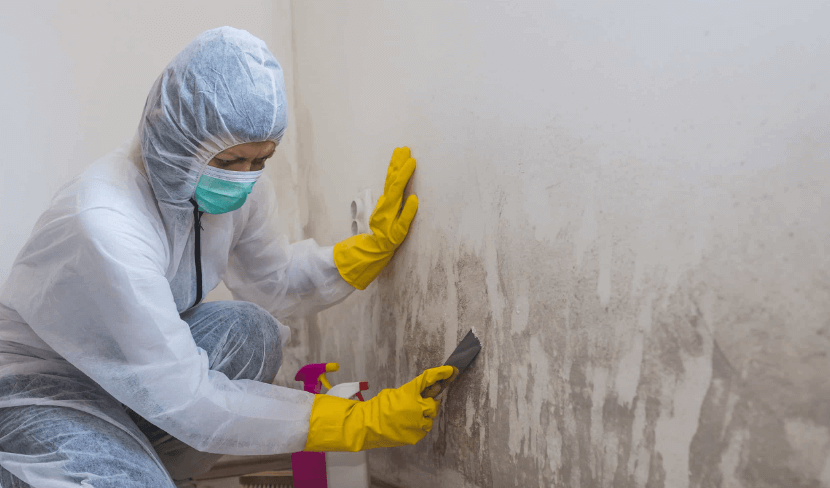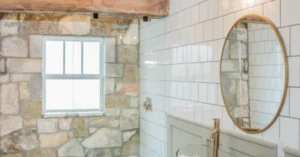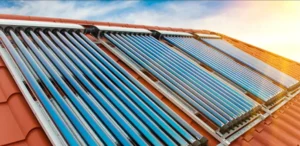Don’t Skip The Checkup: The Lifesaving Power Of Mold Inspections

Don’t skip the checkup: Mold inspections can save lives.
Mold infestation may seem harmless, but it can pose serious health risks if left unchecked. Regular mold inspections are crucial in identifying and addressing potential issues before they become hazardous.
During a mold inspection, a professional will thoroughly assess your property for any signs of mold growth. To schedule life-saving mold testing, this process involves examining both visible and hidden areas, such as walls, ceilings, and crawl spaces. By detecting early warning signs like musty odors or discoloration, experts can pinpoint the source of the problem and recommend appropriate actions.
Ignoring mold infestation can lead to severe respiratory problems, allergies, and even structural damage to your home or workplace. Prevention is key when it comes to avoiding mold growth. Simple measures like controlling humidity levels or fixing leaks can significantly reduce the risk.
If you suspect or discover mold in your surroundings, taking immediate action is crucial. Professional remediation and treatment should be sought to eliminate the problem effectively.
By prioritizing regular mold inspections and taking proactive steps to prevent infestations, you can protect yourself and those around you from the harmful effects of mold exposure. Don’t underestimate its power; make sure you schedule that checkup today!
Key Takeaways
– Mold infestation can pose serious health risks and should not be ignored.
– Regular mold inspections are crucial for identifying and addressing potential mold growth.
– Prevention is key in avoiding mold growth, such as controlling humidity levels and fixing leaks.
– Immediate action should be taken if mold is suspected or discovered, seeking professional remediation and treatment.
Understanding the Dangers of Mold Infestation
Don’t underestimate the havoc that mold infestation can wreak on your health and home – it’s time to delve into the dangers of mold and why you need to take them seriously.
Mold allergies are a common problem for many individuals, causing symptoms like coughing, sneezing, and skin rashes. However, the long-term health effects of mold exposure can be far more severe. Prolonged exposure to mold spores has been linked to respiratory issues such as asthma and chronic bronchitis. In some cases, it can even lead to lung infections or worsen existing conditions.
Moreover, certain types of molds produce mycotoxins that can cause neurological problems when inhaled or ingested.
Considering these risks, regular mold inspections are crucial for maintaining a safe living environment. By identifying any signs of mold growth early on, you can prevent its spread and minimize potential health hazards.
The Importance of Regular Mold Inspections
Regular mold inspections are crucial for identifying hidden mold growth in your home. By conducting these inspections, you can spot any areas where moisture may be accumulating and causing mold to grow. This proactive approach allows you to address the issue before it becomes a major problem. It prevents potential health issues and structural damage that can result from long-term exposure to mold.
Read Also: Key points about light on in the kitchen lyrics
Identifying Hidden Mold Growth
Explore the fascinating world of hidden mold growth and uncover the secrets that could be lurking in your home. Detecting hidden mold can be a challenging task, as it often grows in concealed areas such as behind walls, under floors, or inside ceilings.
This is where professional mold testing plays a crucial role. By utilizing specialized equipment and techniques, experts can identify the presence of hidden mold even in hard-to-reach places. Professional mold testing involves thorough inspections of your property, including visual assessments and air sampling. These methods help to detect not only visible signs of mold but also airborne spores that may indicate hidden growth.
With their expertise, professionals can pinpoint areas prone to moisture accumulation or poor ventilation, which are ideal breeding grounds for mold. Understanding the extent of hidden mold growth is essential for preventing health issues and structural damage.
By taking proactive measures to address these concerns, you can ensure a safe living environment for you and your loved ones while safeguarding your home from potential harm caused by unchecked mold growth.
Preventing Health Issues and Structural Damage
Take action now to protect your health and home from potential damage caused by hidden mold growth. Mold can cause a range of health issues, including allergies, respiratory problems, and even infections. It can also lead to structural damage if left unchecked.
Here are five important steps you can take to prevent these issues:
– Keep your home well-ventilated to reduce moisture buildup.
– Regularly inspect areas prone to mold growth, such as bathrooms and basements.
– Address any water leaks or plumbing issues promptly.
– Use mold-resistant products when renovating or building.
– Clean and dry any water-damaged areas within 24-48 hours.
By following these preventative measures, you can minimize the risk of allergies and other health problems for you and your family while ensuring the structural integrity of your home.
Now let’s dive into the next section about the mold inspection process.
Mold Inspection Process
During the mold inspection process, it’s crucial to prioritize your health and safety. Mold inspections offer numerous benefits, such as identifying potential health hazards and preventing structural damage to your home. A thorough inspection involves finding the sources of mold growth, which can be hidden in areas like attics, basements, or behind walls.
The inspector will carefully examine these spaces for any signs of water leaks, condensation, or high humidity levels that may contribute to mold growth. They will also assess ventilation systems and check for any visible signs of mold on surfaces. By conducting a comprehensive inspection, you can ensure that all potential mold issues are identified and addressed promptly.
This will help you maintain a safe living environment and prevent further damage to your property. Now let’s explore some common signs of mold infestation.
Common Signs of Mold Infestation
One telltale sign that your home may have a mold infestation is the unmistakable musty odor lingering in the air. If you notice this smell, it’s important to take immediate action and conduct a thorough mold inspection.
In addition to the odor, there are other common signs that can indicate a mold problem in your home:
1) Visible growth: Look out for green or black patches on walls, ceilings, or floors.
2) Water damage: Any areas that’ve experienced leaks, flooding, or excessive moisture are prime spots for mold growth.
3) Allergic reactions: If you or your family members experience unexplained allergic symptoms like sneezing, coughing, or watery eyes when at home, it could be due to mold.
4) Respiratory issues: Mold spores can cause respiratory problems such as wheezing and difficulty breathing.
To effectively deal with mold infestations, professional mold removal techniques and accurate mold testing methods are essential. By addressing these issues promptly and thoroughly, you can prevent further contamination and ensure a healthy living environment.
Now let’s move on to preventive measures to avoid mold infestation by…
Preventive Measures to Avoid Mold Infestation
Now that you’re aware of the common signs of mold infestation, it’s time to take preventive measures to avoid this problem altogether.
The key to keeping your home mold-free is avoiding moisture accumulation. Start by ensuring proper ventilation in areas prone to dampness, such as bathrooms and kitchens. Use exhaust fans or open windows when cooking or showering.
Keep an eye on any leaks or water damage and promptly address them to prevent mold growth. Additionally, make sure your home is properly insulated to minimize condensation.
Regularly clean and dry areas where moisture tends to build up, such as window sills and air conditioning units. By taking these proactive steps, you can protect your home from mold infestation and ensure a safe environment for you and your family.
Speaking of safety, let’s now move on to the next section about taking action: remediation and treatment.
Taking Action: Remediation and Treatment
Let’s dive into how you can tackle mold infestation head-on with effective remediation and treatment methods.
When it comes to dealing with mold, taking immediate action is crucial to prevent further damage and minimize health risks.
The first step in the remediation process is identifying the source of moisture that caused the mold growth and fixing it to prevent future outbreaks.
Once this is done, you can proceed with removing the existing mold using appropriate techniques such as scrubbing, sanding, or dry ice blasting.
It’s important to wear protective gear like gloves, goggles, and a respirator while performing these tasks to avoid any exposure to harmful spores.
After removing the visible mold, it’s essential to thoroughly clean and disinfect the affected areas using antimicrobial solutions.
Additionally, ensuring proper ventilation and controlling humidity levels will help prevent future mold growth.
By following these remediation techniques diligently, you can effectively eliminate mold and reduce associated health risks for a safe living environment.
Conclusion
In conclusion, don’t underestimate the importance of mold inspections. Regular checkups can save lives by identifying potential dangers and preventing further infestation.
The process involves thorough examination and testing to ensure your safety. Look out for common signs like musty odors, visible growth, or respiratory issues.
To avoid mold infestations, take preventive measures such as controlling moisture levels and fixing leaks promptly. If you do find mold, don’t delay remediation and treatment to protect your health and the well-being of those around you.
Stay vigilant and prioritize mold inspections for a healthier living environment.








